One of my all-time favorite rosehip recipes, the tart jam is bursting with flavor. Grated crabapples help add some pectin, sweetness and body. You'll want to make sure you have the largest rosehips possible for this.
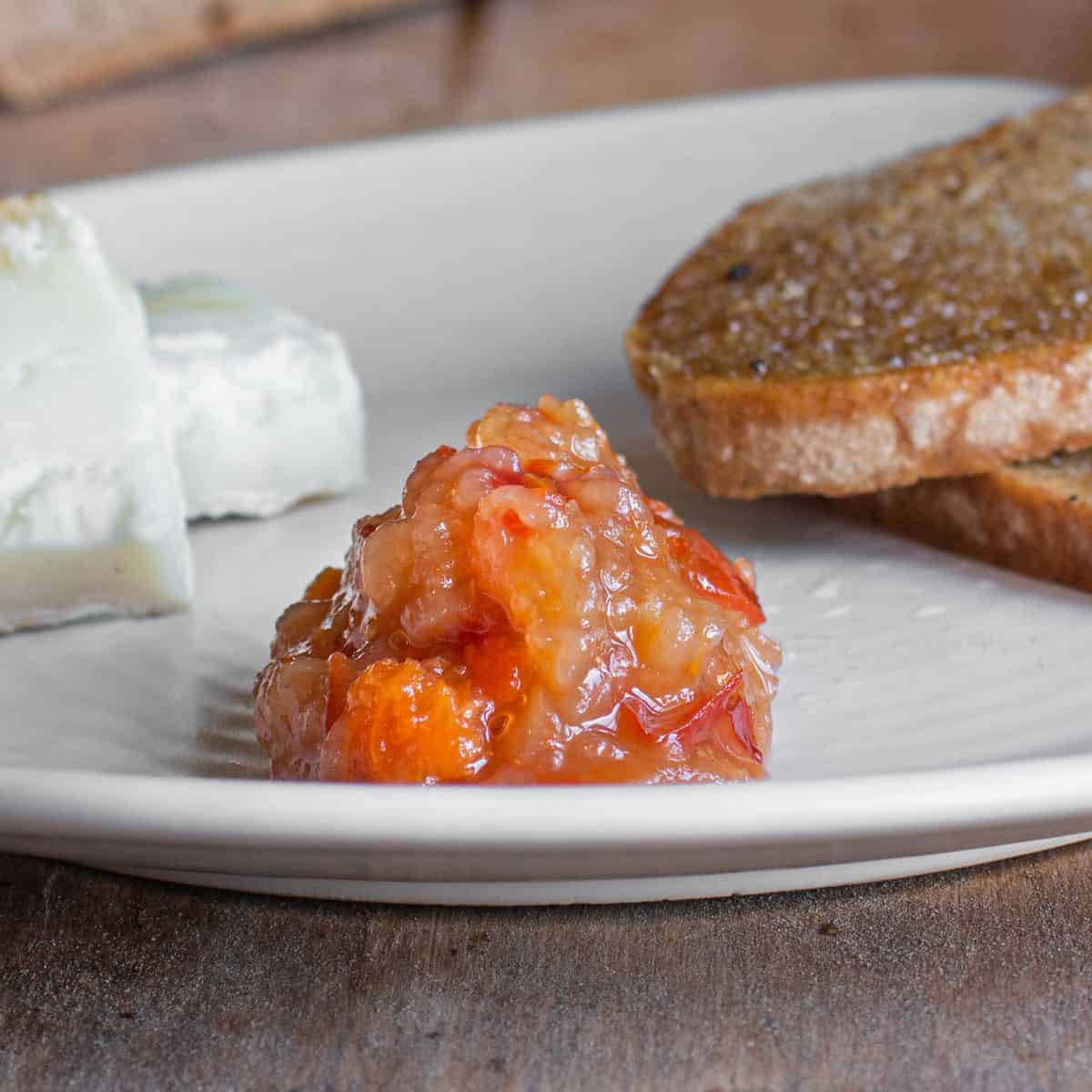
Small Rosehips vs Rosa Rugosa Rose Hips
I never really paid attention to rosehips when I saw them. I knew you could use them, but I didn't understood why anyone would take the puny little fruits of wild roses I saw on hikes and make them into anything. There never seemed to be enough to harvest and even if there were, cutting and trimming small fruits the size of a dime just didn't appeal to me, it's a lot easier to go over to some oak trees and find some mushrooms.
I noticed the rose plants my girlfriend's mother grows were sporting large hips this year, much bigger than the small wild ones I had been used to seeing. I learned that those hips could potentially be found wild too, but it's a lot easier to get a large amount if you know someone growing a species of rose that makes big fat hips. The rose plant you want is Rosa rugosa.
Even with the big hips, it took two prep cooks two days of working in their spare time to clean about 10 lbs of hips I picked, each one needs to get trimmed, then every seed needs to get meticulously scraped out before you can cook with them.
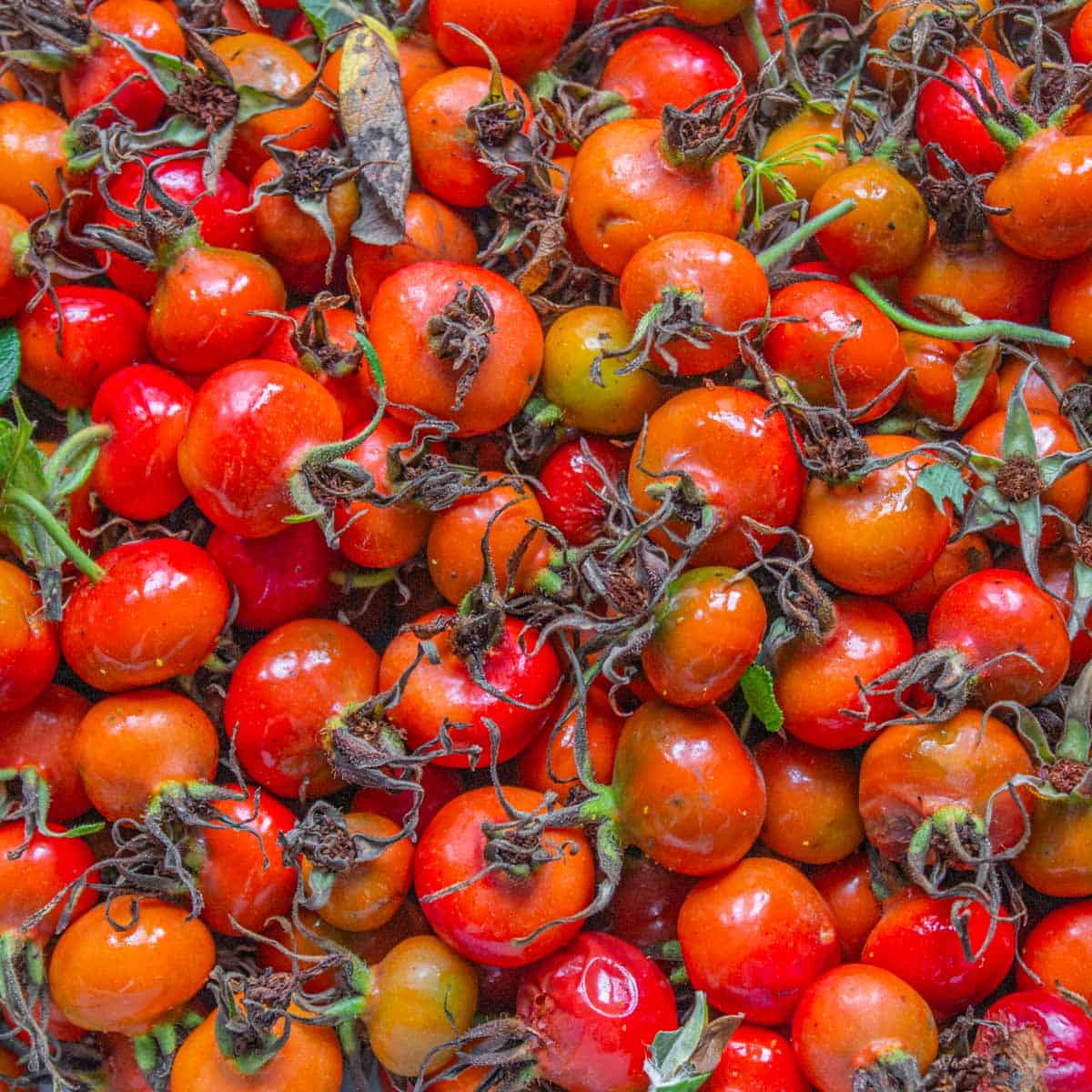
I knew I'd preserve them somehow, but I also knew I'd be having to write a recipe for whatever I made for the future, because the vast majority of preserve recipes in books and online have an insane amount of sugar in them for my taste. Don't get me wrong, I like my jam sweet, and the properties of sugar are necessary to ward off bacteria, but I don't want eating it to make my teeth fall out of my head. I want balance.
You have to control the bacterial environment in sweet preserves somehow, but it doesn't have to be completely sugar, maple syrup and honey are also options, but container more water that needs to be accounted for in recipes for the jam to be spoon-able, or set.
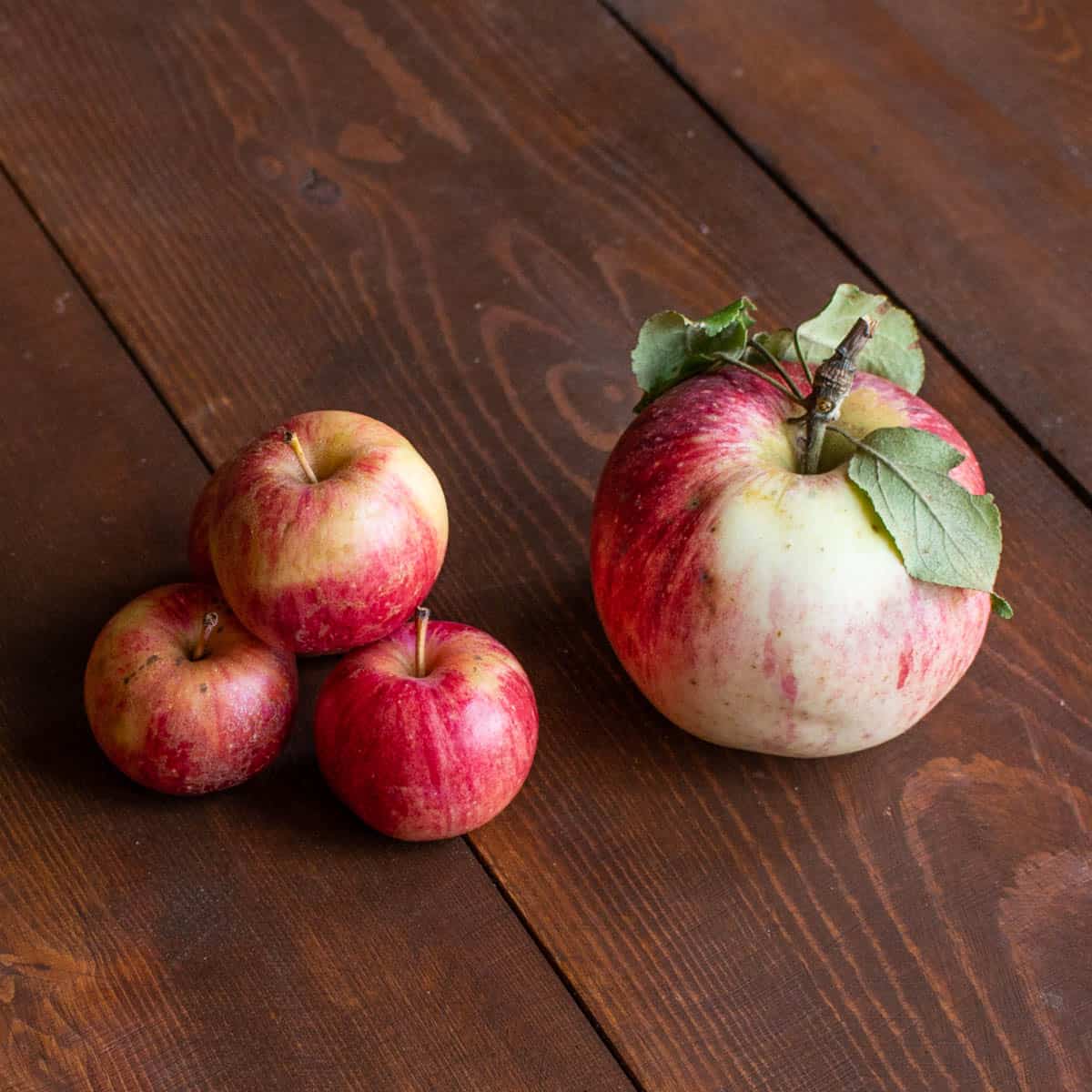
Vinegar is another preservative agent, and combining vinegar and sugar will make a bulletproof preserve. You could also ferment a preserve of them, but that's another post. After a couple tries I found some proportions that I liked with vinegar and sugar, not too sweet, not too sour and as good on toast in the morning as it is with some really nice goat cheese, which is how I served it at my restaurant.
The synergy of vinegar and fruit
Vinegar (and alcohol) have a magical ability to enhance aromas, especially those of fruit and flowers, rosehips are at the middle of an odd convergence here, since they function like fruit, but are part of the reproductive system of a flower. When you mix vinegar and fruit, floral scents are enhanced, and fruit tastes even more "fruity".
I always think about the particular vinegar and why I'm putting it with the fruit, since every fruit has certain vinegar it will taste better with. Choosing the perfect vinegar for a preserve is another way for you to subtly layer flavor.
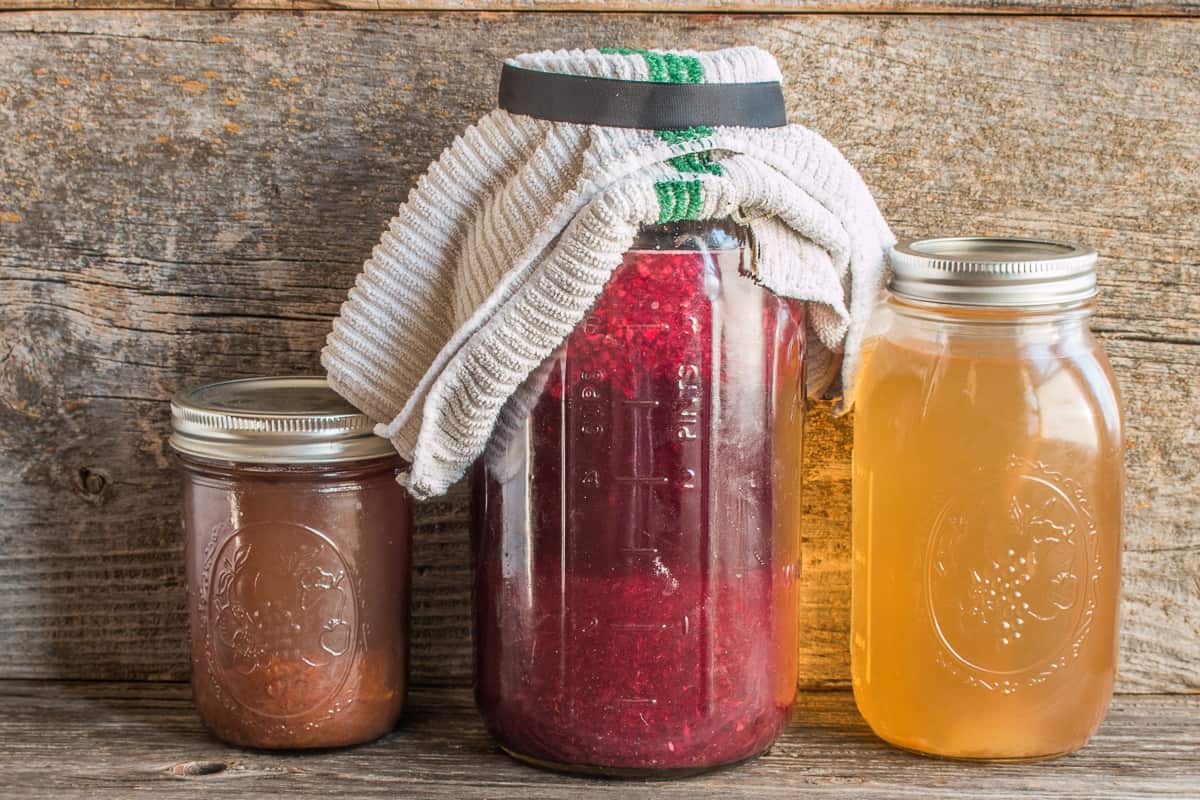
Since apples are in this recipe I like to use cider vinegar, white wine or champagne, using red wine vinegar would give a totally different result. By the same token, making a jam with dark, red fruit like aronia berries, to me, begs for red wine vinegar.
For a study in fruit flavors, try flavoring your own preserves with a vinegar made from the fruit using my Fruit Scrap Vinegar Recipe.
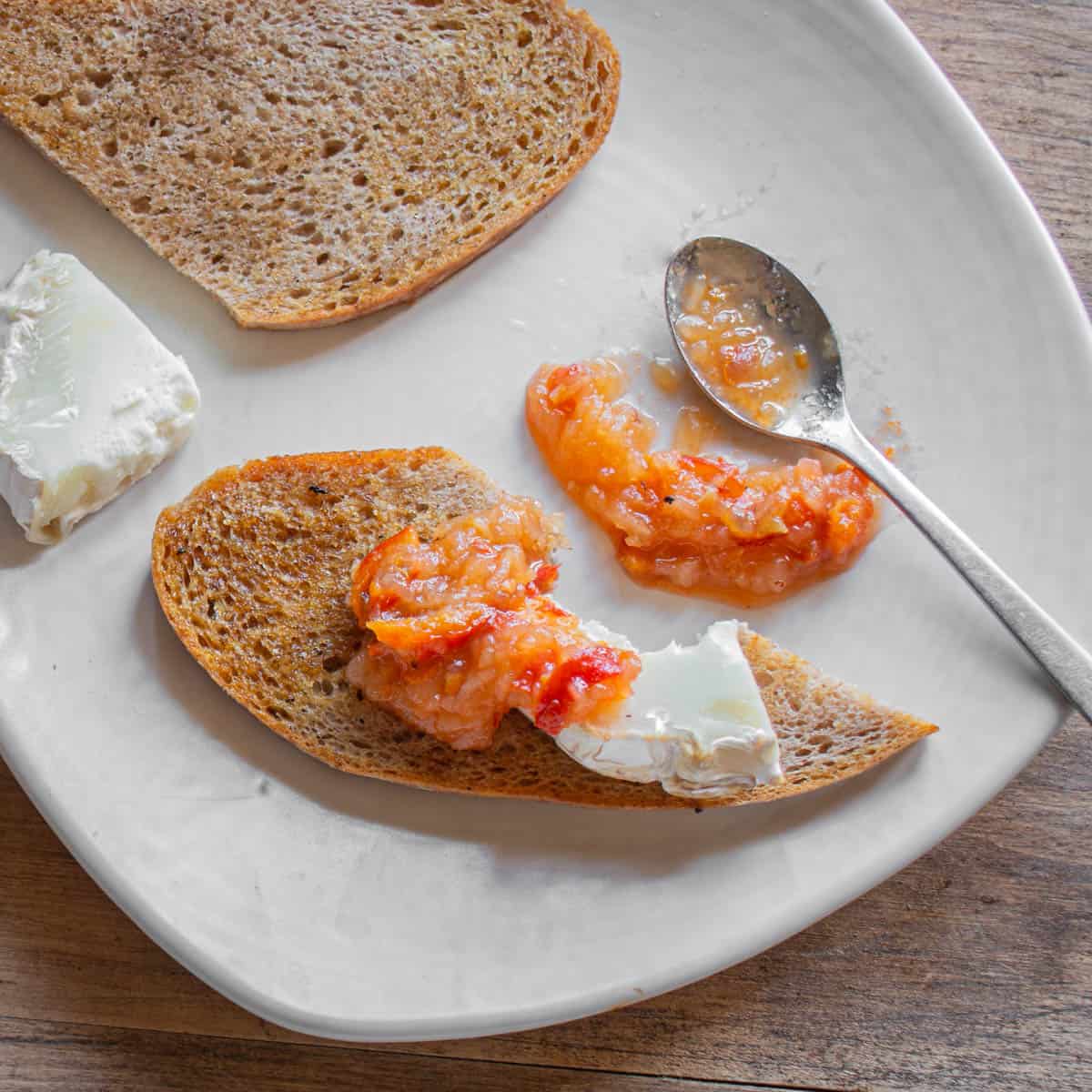
Rugosa Rosehip-Crabapple Jam
Equipment
- 1 3 quart saucepot
Ingredients
- 8 cups whole rosa rugosa hips This should yield roughly 3 cups of cut, trimmed rosehips or about 15 oz.
- 2 lbs crab apples
- 2 cups water
- 2.5 cups cider vinegar
- 2 cups sugar
- Zest and juice of 1 meyer lemon grated on a microplane, or substitute ½ small orange and ½ a small lemon
Instructions
- Peel and core the apples, then reserve in acidulated water. Reserve all of the skin, seeds and core, wrap in cheesecloth and tie to make a bouquet. Cut the bottom off of each rose hip, then cut in half, remove the seeds, julienne ¼ inch and reserve.
- Shred the apples through the grating attachment on a food processor or similar, then combine with the hips, meyer lemon zest and juice, vinegar, sugar, bouquet and water.
- Bring the mixture to a simmer, then cook in a wide pan (I use a 10 inch brazier) slowly on medium-low heat, stirring occasionally until the pan is nearly dry, roughly 30 minutes.
- Pack the mixture into ½ pint canning jars, then process for 10 minutes in a water bath, or transfer to labeled, dated containers and reserve refrigerated until needed. The jam will keep for 12 months, and probably longer. Refrigerate it after opening.

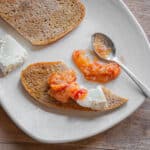
Aryanne
Hi Alan!
I am getting ready to make this recipe and I'm seeing all kinds of conflicting information on how much you have to do to the hips to get rid of the "hairs". Some say scoop out the middle, wash them, dehydrate them, sieve the fine hairs out, THEN cook. This seems excessive. Another person said cook the whole fruit and run it through a food mill. What is correct and why?
Alan Bergo
Just scoop out the middle is all I do. But I only use Rosa rugosa hips for this really.
Aryanne
Hello! I was wondering. There is a LOT of conflicting info on how scrupulously to clean out the seeds and itchy "hairs" before making rosehip jam. Some people seem to go to ridiculous lengths and some say cook them whole and separate the seeds out with a food mill. Which is it, and why? Thank you so much for your help. I love your book.
Alan Bergo
Aryanne, sorry I was pokey here. If you have Rosa Rugosa hips, you can simply cut them in half and clean them out with a spoon. Any other rose hip I've worked with are usually too small and I dry them for tea-not worth the trouble of cooking and passing through a food mill imo.
pepita
I'm keen to try this recipe, but there's one thing i'm not sure of. I have prepared the rosehips before mesuring them. could you tell me what's the total weight of rosehips neede to do this jam?
Alan Bergo
Sorry Pepita, this is a very old recipe. Think of it more as a guide until I can re-do it and weigh some fresh hips. I'd assume at 2 cups of finished, cut hips (4-6 oz after trimming?) It's ok if they're just a garnish too!
Alethea Mari
I tried this recipe and find it to be an explosion on the palate! It's great for my husband who is diabetic and can't eat traditional jam and since it is so potent you don't need much of it. I was thinking how nice this would be on a cheese plate and he mentioned a ham sandwich.
Can I ask what you served it with at the restaurant? I'd like other ideas for this so I can suggest that when I gift them to people at Christmastime.
Thank You
Alethea Mari
Two Peas Garden
Come Grow with Us.
Dotty
When my kids were little I picked lots of wild rosehips along the Minnesota river. In addition to using them for pink tea, I found they were truly medicine children would take for colds and fever reduction. I would run them in the blender with water, add fresh lemon juice and let stand at room temp overnight. Then drained the hips out , added a little waple syrup or honey and stored cold until needed.
Alan Bergo
A great way to add some vitamin C to the kids diet. Luisa told me you used to do that! Thanks Dotty.
Jacqui
Dear Alan,
Your recipe looks fabulous. I will experiment with cider vinegar, also for hawthorn jelly or relish...
Rosehip jam, made from Rosa rugosa fruits is very common in Denmark. You can buy "Hyben Marmelade" in ordinary grocery stores, not only in specialty "health food" types of places (and it is, indeed, always stretched with apple). The Danes planted Rosa rugosa as a landscaping species along their very extensive coastline to stabilise the dunes, as well as in parks in towns and it EVERYWHERE.
My husband, a Dane, favours rosehip jam made with halves or quarters of not too ripe fruit, and cooked as little as possible so they retain their "crunch" (tossed in after the apple has been cooked to a mush just for the final sterilising and setting boil). He always adds vanilla - whole beans, scraped and then cut in pieces right in the jam.
Alan Bergo
Hi Jacqui, I never knew that you could plant roses to stabalize sandy soil, I'll remember that. Looks like I'm going to have to try a batch of the hip jam with them thrown in right at the end too, having them retain some of their texture sounds great. I bet my great grandmother from Copenhagen might have a recipe up her sleeve, I'll have to ask my grandmother. Thanks for sharing.
Jacqui
Your great grandmother from Copenhagen probably made Rowan (Rønnebær) jelly too, though it is more common in Sweden than in Denmark (the jelly, not the berries - Denmark is as full of Rowan as it is of Rosa rugosa, but the Rowan is native). It's new year's eve, so we'll be eating foie gras accompanied by my rowan crabapple jam followed by roast roe deer back (scavenged myself - I found a freshly killed doe a few weeks back) with a sauce made of dogwood fruits spiced up with with hogweed seeds, allspice, cinnamon and kumquats. I hope you will be eating something wonderful.
E
Hehe, I remember foraging in the wild especially for rosehips. Apparently Eastern Europeans love them - my grandfather grew up in Hungary/Romania and he taught me how to recognize rosehips. He used to collect them when he was a boy - rosehips whould be turned into jelly, Crabapples into homemade liquors and spirits...